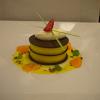-
Welcome to the eG Forums, a service of the eGullet Society for Culinary Arts & Letters. The Society is a 501(c)3 not-for-profit organization dedicated to the advancement of the culinary arts. These advertising-free forums are provided free of charge through donations from Society members. Anyone may read the forums, but to post you must create a free account.
Black lime
-
Similar Content
-
- 0 replies
- 1,311 views
-
- 18 replies
- 911 views
-
- 2 replies
- 401 views
-
- 23 replies
- 3,154 views
-
Lime Praline ?
By pjm333,
- 16 replies
- 1,353 views
-
-
Recently Browsing 0 members
- No registered users viewing this page.





Recommended Posts